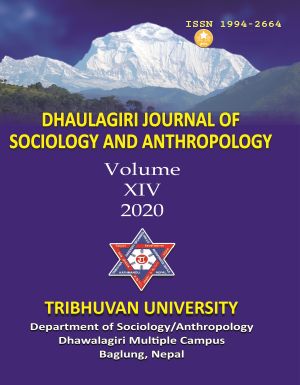Höfer, A. (2004). The caste hierarchy and the state in Nepal (2nd ed.). Himal Books.
DOI:
https://doi.org/10.3126/dsaj.v14i0.31030Keywords:
András Höfer, Muluki Ain, Caste Hierarchy, Doxa, Habitus.Abstract
In this article, I have analyzed András Höfer’s ‘The caste hierarchy and the state in Nepal’ through a post-modernist lens. The book is a study of the Muluki Ain (MA) of 1854. Through this review, I analyze the book as well as the MA and its relevance in the modern society. Rather than summarizing Höfer’s ideas, I intended to bring out the nuances and analyses which can aid in the understanding of caste from the perspective of doxa and habitus. Despite the government’s efforts to eradicate caste based discrimination through various laws and by-laws, the rules in MA of 1854 are still embedded in the minds of people. Through the perspective of power, habitus and doxa, I attempt to explain how the caste based discrimination still creeps into the modern Nepal as a quotidian affair. In this article, I also critique some of the conundrums that exists in the book as well as the MA.




